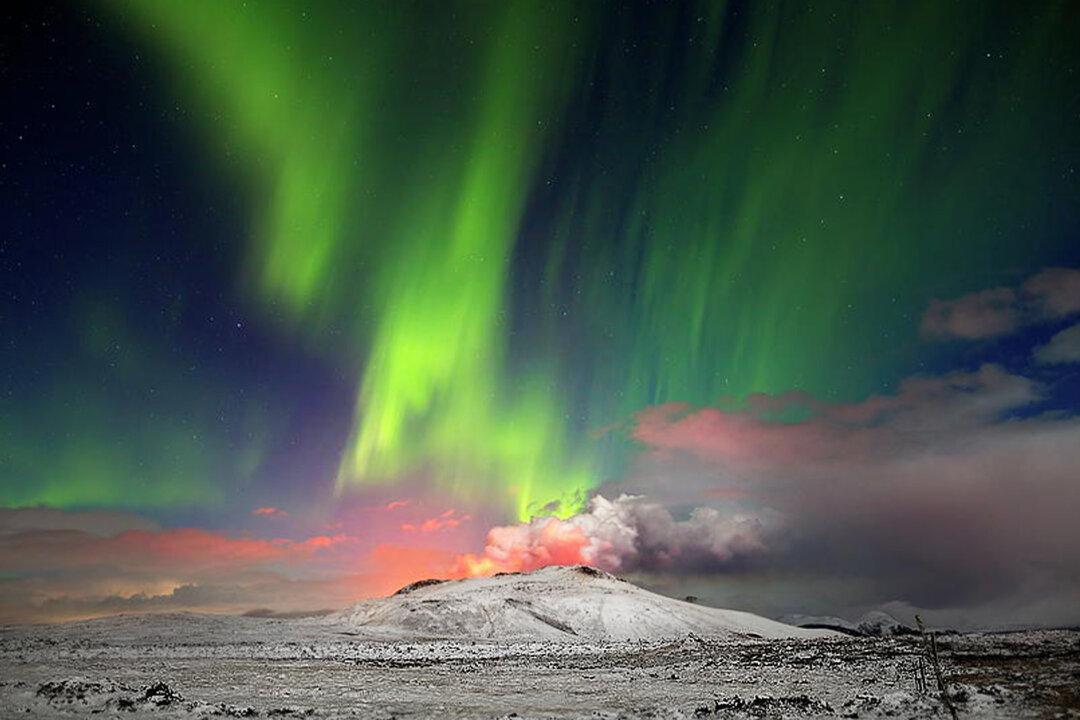An American photographer, who waited years for the chance to capture an epic natural phenomenon on film from his new home in Iceland, was rewarded by a double whammy: an erupting volcano against the spectacular backdrop of the aurora borealis.
Preparations for the photo that would become a viral sensation began even before lava flowed.





